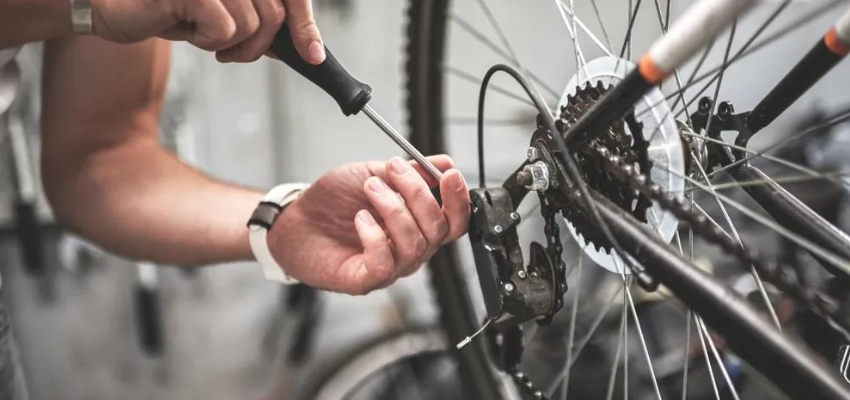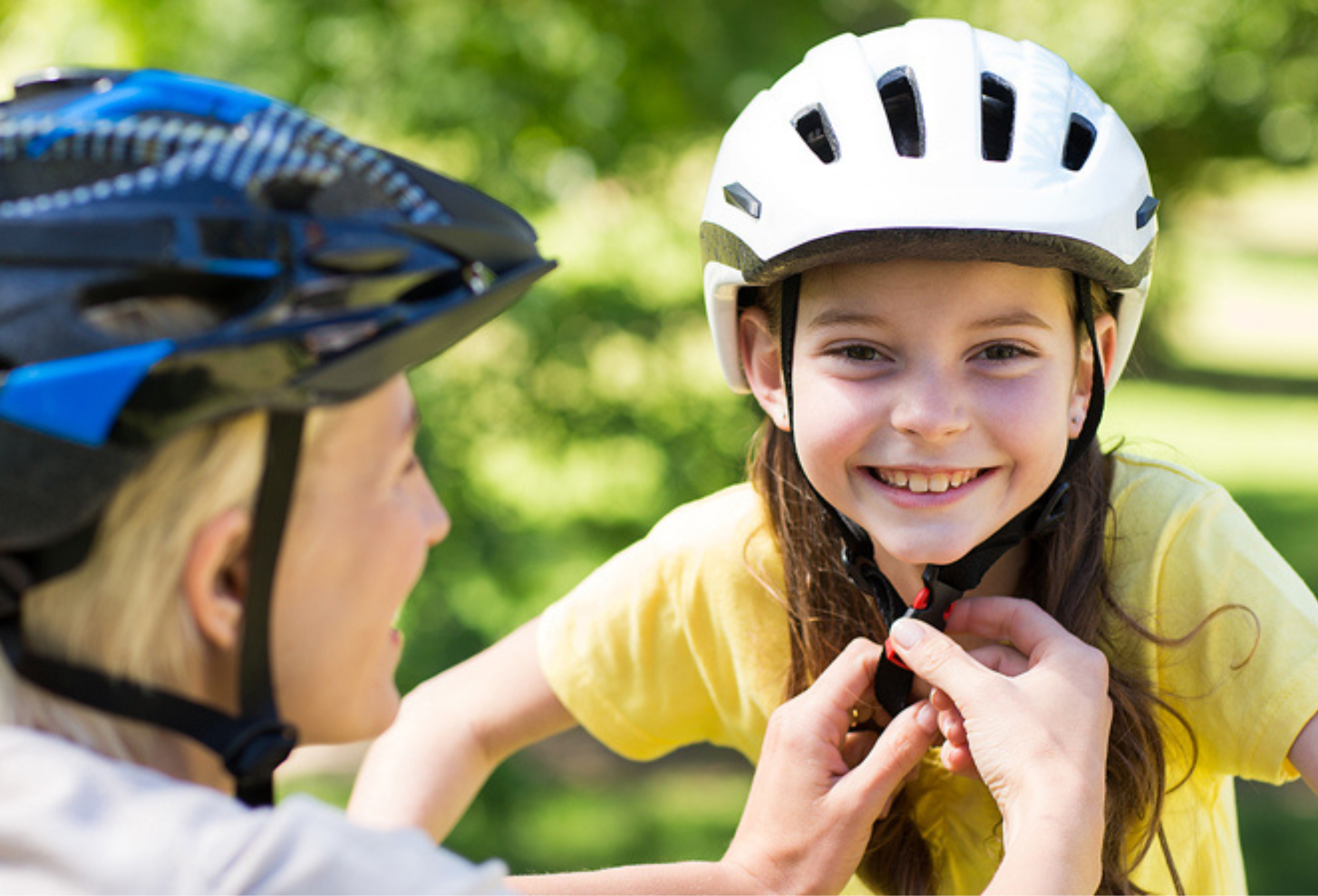
Like any sport, cycling tips for beginners comes with various do’s and don’t’s, know-how’s, accessory catalogs, good-to-haves, etc., etc., which may all be bewildering. We have prepared a checklist covering eight crucial criteria for folks beginning their cycling journey to assist make their trips exceptional and gratifying experiences.
How to Determine the Appropriate Bike Type and Size
A vital component of riding is making sure you have the correct bicycle in terms of the kind, as well as size. Bicycle kinds rely on riding terrains and unique riding motives. If you intend to commute and the distance you traverse is rather considerable, we recommend an e-bike and advise adding a pannier. An e-bike will perform well so that you let the bicycle absorb part of your effort and energy so that you may arrive at your office fresh.

A pannier is preferable to carry your backpack or any other case than hanging it on your back while cycling tips for beginners. However, if you are adventurous and your cycling travels take you across mountainous paths, an MTB or a Mountain Bike is your best choice. A Hybrid bicycle is suitable for cycling on paved areas. Their narrow tires provide for a quicker ride. If you’re hoping to enjoy your journey at your speed and explore the untamed countryside, select from the specialty cycling alternatives of Fat Tires Bike. Their broad tires provide traction and may easily and pleasantly be ridden on wet, muddy, sandy, slippery terrain.
Whatever the style and function of your bicycle, be sure that the bicycle size matches your fit. Most manufacturers mention the user’s height along with other data for each bike. That is suggestive, but the ideal technique would be to stand astride the top bar of your prospective purchase and check that there is at least a 1-2″ space between the top bar and your crotch.
Mastering the Art of Cycling
Yes, we’re not kidding. We know and expect you can balance and ride well. But you have to make sure that you are extraordinarily acquainted, and it should be like second nature, how to start and stop a bicycle. Remember, you are riding along roads that may have traffic along with other motorists and may force you to stop and start cycling many times.

Practice placing one foot on the ground and the other on the pedal in a ready-to-start posture so that you can begin instantly cycling on cue. Also, practice utilizing the brake so that your stop is not sudden and harsh. It should be a soft and gradual push of the left-hand brake lever, which controls the rear wheel gear, and then the right-hand lever for the front wheel brake.
cycling tips for beginners For quick stopping, push both brake levers simultaneously although it is not a recommended position as it propels you forward, and falling over the handlebars is not far-fetched. Practice pushing your body backward when you hit both brakes simultaneously.
Shifting gears Practice a little albeit not essential. You can ride your gear bike without using gears. But then, where’s the joy in that? Don’t stress about being in the ‘correct’ gear. Choose one that enables you to cycle effectively and comfortably. Keep in mind these two things:
1) When riding uphill, change the gears on the right shifter to make pedaling more easy, and
2) Start using the ones on the left when you start running out of gears on the right.
With a little of experience, you will recall which gear shifter controls which derailleur and in which direction you need to pull or push.
Dressing up for cycling tips for beginners
When you bike, what you wear should all be about comfort and safety. Comfortable so that you do not feel confined with your arm and leg pedal motions, and safe that there is flowing material that may get in the way of riding or become caught in the wheels.
If you were to look online, lycra cycling jerseys and cycling shorts are popular.

They excellently complement the activity by keeping you cool and comfortable. They are more suited for, for instance, a long-distance bicycle trip and for frequent, regular cycling. While merely shopping in your area does not need cycling clothes. However, you must always wear good-fitting shoes, laced or otherwise, that do not have the risk of falling off your feet as you bike along.
Safety cycling tips for beginners
Safety needs to be first in your thoughts even while enjoying a short bike around your local region. Always wear a bicycle helmet. Think about bicycle helmets as you would for vehicle seat belts. And don’t bring one out that you purchased decades ago. Technology has since altered, and modern bicycle helmets are cool to wear and lighter. Make sure it fits tightly and is comfortable, and most importantly, use it properly tighten it when using. Additionally, you must utilise illumination, both for the rear and front, particularly while riding in poor lighting and under-lit highways and trails.
Pre-Ride Inspection of the Bicycle
A pre-riding check is a must-do before every ride. It takes just a few minutes but might prevent you from a possible accident and lost time. The test would help you prevent punctures, ensure nothing comes loose while on your ride, and establish the smooth working of the mechanics of the bicycle.
cycling tips for beginners Check that both the wheelsets are properly fastened by verifying the axle nut or quick-release mechanisms are snug. Then ensure that the tires have the right air pressure as advised and that there is no debris on the threads that might be a possible puncture cause. Check that the brake lever and each of the brakes are operating by completing a brake check. And last, execute a bicycle chain test to check that it is suitably greased. Check our complete article here.
Knowledge and Equipment for Fixing Punctures

While you may have done many inspections you might still suffer a tire puncture. Statistics suggest that the most frequent problem that a cyclist confronts is a punctured tire. So aside from understanding how to repair a puncture to the tire tube, you must also bring the appropriate equipment, including a spare tube if needed to replace it, and sandpaper, patch, and glue to mend the tube. And tire levers, alongside a bicycle pump and a bicycle multi-tool set.
What to Eat and Drink While Cycling
Hunger pains and thirst arrive at the most inopportune moment Cycling is no different. Make sure you carry a large supply of water using a bottle linked to a bottle rack. And for energy, eating in tiny quantities that are portable is the best bet. Pack some chocolates that don’t readily melt, trail mix, and energy bars simple to carry and less likely to go bad if stored appropriately.
Safety on the Road
Make sure you are alert and observe all the road signals. Additionally, despite respecting the traffic regulations, you need also be alert and employ hand signals that you, as a cyclist, should be adopting to let other vehicles and riders know your intentions. Whether stopping, slowing down, turning left or right, or danger ahead, understanding the universal indicators and following them is excellent practice to follow
Another safety suggestion is to try to plan your journey along bicycle-only lanes whenever feasible. They are safer and preferred than traveling roads with other motorized automotive traffic, even if it means going a few more kilometers. Remember, riding is never only about reaching the objective but also about enjoying the ride.
Cycling shouldn’t be an intimidating chore but rather a fun hobby. Following these guidelines, particularly as a beginning biker, will help make your trips a fantastic experience.
Do you have recommendations that you believe are a must-do or a must-know for newbie cyclists? We’d love to hear about it. Please share by posting here Please do share by putting in the comments area below.
Cycling FAQ for Beginners
1.What type of bike should I choose?
Choose based on your riding purpose: e-bikes for commuting, mountain bikes for off-road, hybrid bikes for paved roads, and fat-tire bikes for rough terrains.
2. How do I determine the right bike size?
Ensure at least a 1-2″ gap between the top bar and your crotch when standing over the bike.
3. What should I wear for cycling?
Wear comfortable and safe clothing, such as lycra jerseys and shorts, and always use well-fitting shoes.
4. Why is safety important?
Always wear a helmet, use lights for visibility, and follow road signals to stay safe.
5. What should I check before riding?
Inspect tire pressure, brakes, and chain lubrication for a safe ride.
Conclusion
In conclusion, cycling tips for beginners is a fantastic way to explore, commute, or stay fit, but it requires some essential know-how to ensure a safe and enjoyable experience. From choosing the right bike type and size to mastering cycling techniques, dressing appropriately, and understanding road safety, preparation is key. Regular bike maintenance and being equipped to handle minor issues like punctures can make a significant difference. Remember, cycling is not just about reaching your destination—it’s about enjoying the journey. By following these guidelines, beginner cyclists can confidently embark on their adventures and make the most of every ride.


